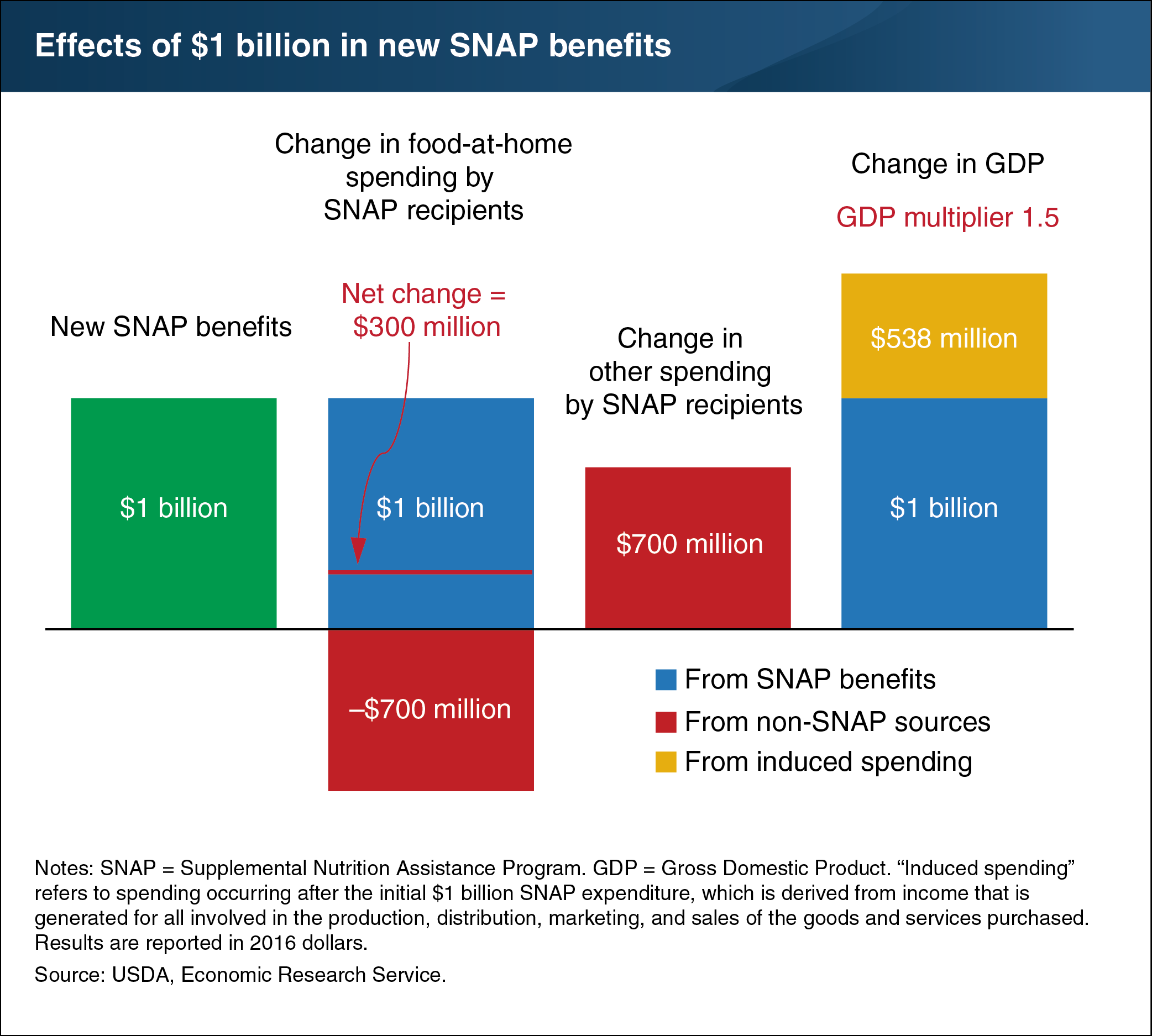Expanded SNAP benefits would raise Gross Domestic Product
- by Patrick Canning and Constance Newman
- 8/21/2019

Low-income participants in USDA’s Supplemental Nutrition Assistance Program (SNAP) generally spend their benefits soon after receiving them. This spending by SNAP households “multiplies” throughout the U.S. economy as the businesses supplying the food and other goods purchased—and their employees—receive additional funds to make purchases of their own. A recent ERS study examined the multiplier effect of a hypothetical $1 billion increase in SNAP benefits. Most SNAP participants spend their own cash in addition to SNAP benefits to purchase adequate food. Thus, SNAP households would spend the full amount of the increased benefits, but would redirect some of the cash that they were spending on food at grocery stores to other goods or services. The study predicted that the $1 billion in additional SNAP benefits would raise SNAP households’ food spending by $300 million and their non-food spending by $700 million. This increased spending, combined with the subsequent multiplier-induced spending of both non-SNAP households and SNAP households ($538 million), would raise Gross Domestic Product (GDP) by $1.54 billion. This chart appears in the ERS report, The Supplemental Nutrition Assistance Program (SNAP) and the Economy: New Estimates of the SNAP Multiplier, and the Amber Waves article, “Quantifying the Impact of SNAP Benefits on the U.S. Economy and Jobs,” released July 18, 2019.

